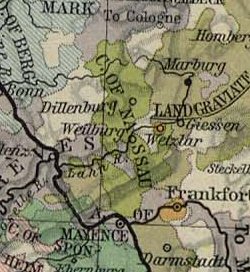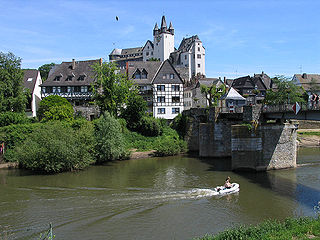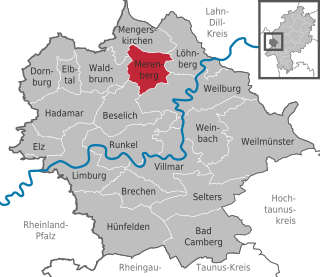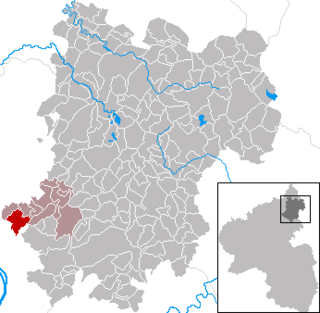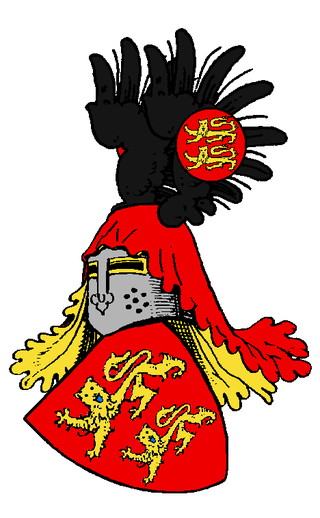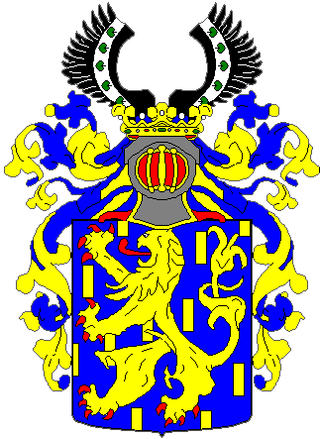History
The community of Waldbrunn is largely coëxtensive with the former parish and tithing area of Lahr, one of four that once belonged to the Amt of Ellar. The three other parishes were the tithing areas of Frickhofen, Elsoff and Niederzeuzheim (known collectively as the Vier Centen).
Until 1815, the centre of Waldernbach (nowadays part of the community of Mengerskirchen) also belonged to the parish of Lahr along with the now forsaken centres of Wehnaue/Winnau, Wenigen-Reynderroytchen, Brotelbach, Brechtelbach, Gralshofen and Oberhof.
The oldest trace of man in what is now the community is an urnfield grave from the Bronze Age near Fussingen. After the Ubii migrated from the area in 38 BC, it was settled by the Usipeti.
In Frankish times, the Amt of Ellar with its four tithing areas belonged to the Niederlahngau under the Counts of Diez. In 1337, they sold the Counts of Katzenelnbogen this Amt. In 1401, Gerhard Kelner appears as the first Keller (a kind of estate manager) of the County of Katzenelnbogen in Ellar.
From 1491 comes the oldest preserved print of the Ellar court's seal, which later yielded today's civic coat of arms. The court was dedicated to St. Maximinus. The Amt of Ellar found itself in Nassau-Dillenburg's hands in 1557.
Through a bequest-sharing agreement, the Amt of Ellar passed to Nassau-Hadamar in 1607. In 1609, Greden, mentioned as “Rörichs Johanns Weib” (that is to say, his “woman”, although the word is cognate with the English “wife”) from Ellar, was put to death in Hadamar after having been found guilty of being a witch.
The villages in the Amt of Ellar became Catholic again in 1630, whereupon Prince Johann Ludwig of Nassau-Hadamar authorized the Jesuits. A Plague epidemic swept through the Amt of Ellar in 1636 and 1637. The village of Obersdorf was wiped out utterly without a single villager surviving. Many other villages lost most of their people. The Jesuit priest Rutger Hesselmann took it upon himself to care for the sick. He died of the Plague on 30 April 1637. The upheaval brought about by the Thirty Years' War led to considerable losses in the surrounding centres. Besides plunderings by soldiers moving through the area, the people also suffered food shortages and many outbreaks of illness.
In 1736 came an uprising in the villages of Dillhausen, Dorchheim, Dorndorf, Ellar, Fussingen, Frickhofen, Hausen, Hintermeilingen, Mühlbach, Lahr, Langendernbach, Probbach, Waldernbach, Wilsenroth and Winkels against the war tax that Prince Christian of Nassau-Dillenburg had imposed on them. The uprising went down in history as the Klöppelstreit (“Clapper Dispute”). The uprising was quelled by Dillenburg and Weilburg soldiers.
With boundary adjustments in Orange-Nassau in 1790, the new Amt of Ellar was founded. It comprised the parishes of Lahr und Frickhofen.
In 1806, the Amt of Ellar was made part of the Grand Duchy of Berg. All today's constituent communities belonged to the Mairie of Lahr in the Canton of Hadamar, which in turn belonged to the Arrondissement of Dillenburg and thereby also to the Département of Sieg. In 1815, the Grand Duchy of Berg was awarded to the Kingdom of Prussia. Prussia, however, exchanged the Mairie of Lahr for some places around Wetzlar with the Duchy of Nassau.
With boundary adjustments in the Duchy of Nassau, the Amt of Ellar was merged with the Amt of Hadamar. After the Duchy's annexation in 1866, the places within the Amt found themselves in the Kingdom of Prussia. In 1886, under the Prussian district and province reorganization, the old Nassau Amt system was abolished. Waldbrunn's constituent communities then belonged to the district of Limburg, whereas Waldernbach was assigned to the Oberlahnkreis district.
British bombers dropped seven high-explosive bombs over Ellar during the Second World War on 29 August 1941. On 27 March 1945, United States troops occupied the community. Since 1947, the community has been part of the Land of Hesse.
In 1964, the municipal coat of arms was introduced as Ellar's arms. On 1 January 1971 came the merger of the communities of Ellar and Hintermeilingen into the community of Ellar. The centres of Fussingen, Hausen and Lahr merged themselves into the community of (Alt-)Waldbrunn. On 1 July 1974, the five centres were united to form the community of Waldbrunn (Westerwald).
Religion
The population is overwhelmingly Roman Catholic.















